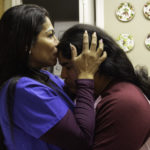
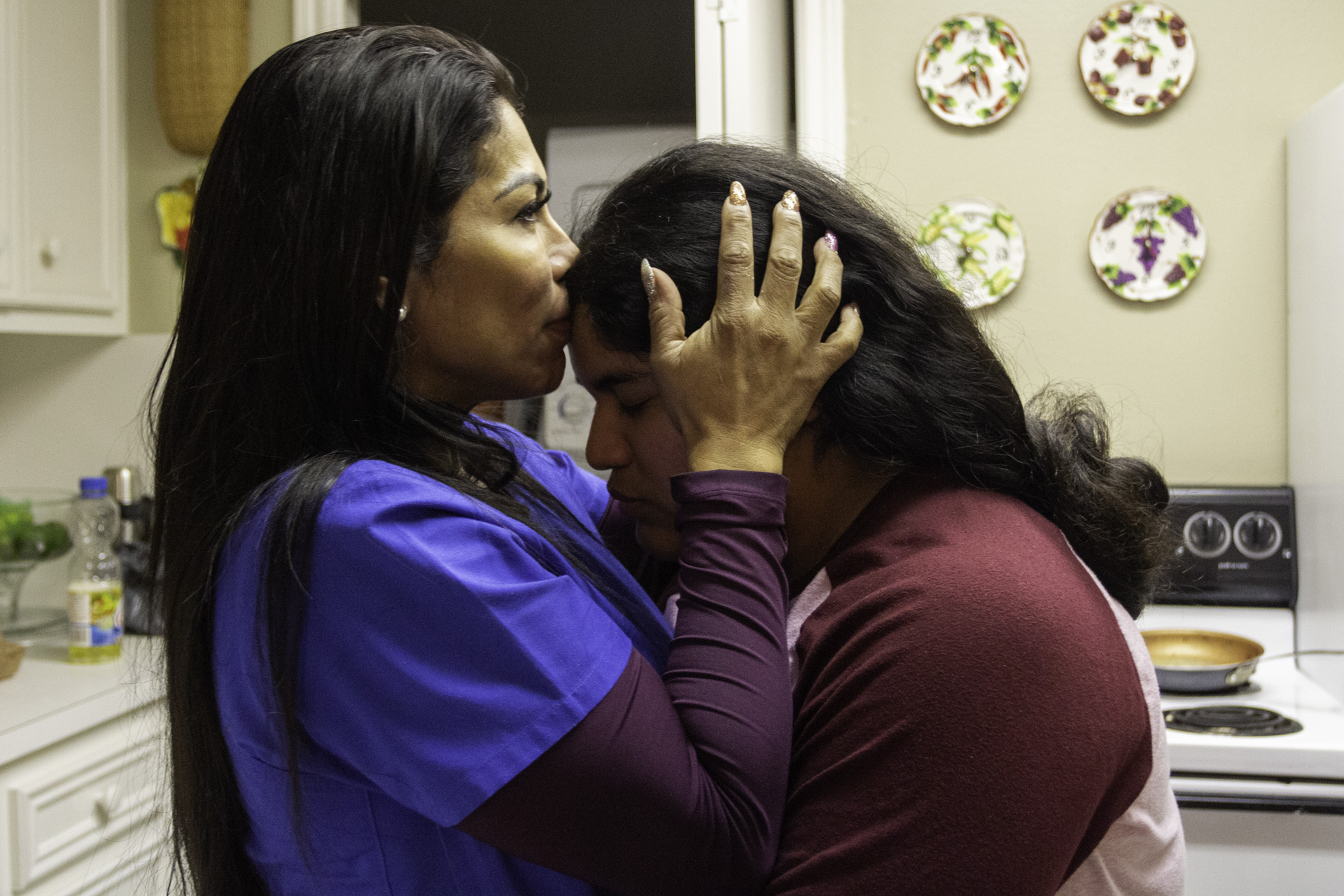
Magdalena Pineda (left) smells Celine Pineda’s forehead, who is her daughter, in the kitchen of their Missouri City home. This is a traditional greeting within their Navajo tribe, and Magdalena Pineda said her people can smell the difference between someone who is their relative and those who are not. | Katrina Martinez/The Cougar
In a room full of hundreds of faces from around the globe at one of the most ethnically diverse universities in the nation, Celine Pineda she felt cold and alone.
Even as a young adult, Pineda has grown accustomed to unwelcoming eyes and the feeling of isolation, but during her freshman orientation in June 2019, she realized her search for a community would continue despite the hope UH would provide some relief.
Pineda is Navajo and one of only 35 Native American/Alaska Native women on campus, according to the UH Fall 2019 Facts report. Despite enrollment growing by almost 10,000 during the last 10 years, the indigenous student population has suffered a steady decline in enrollment.
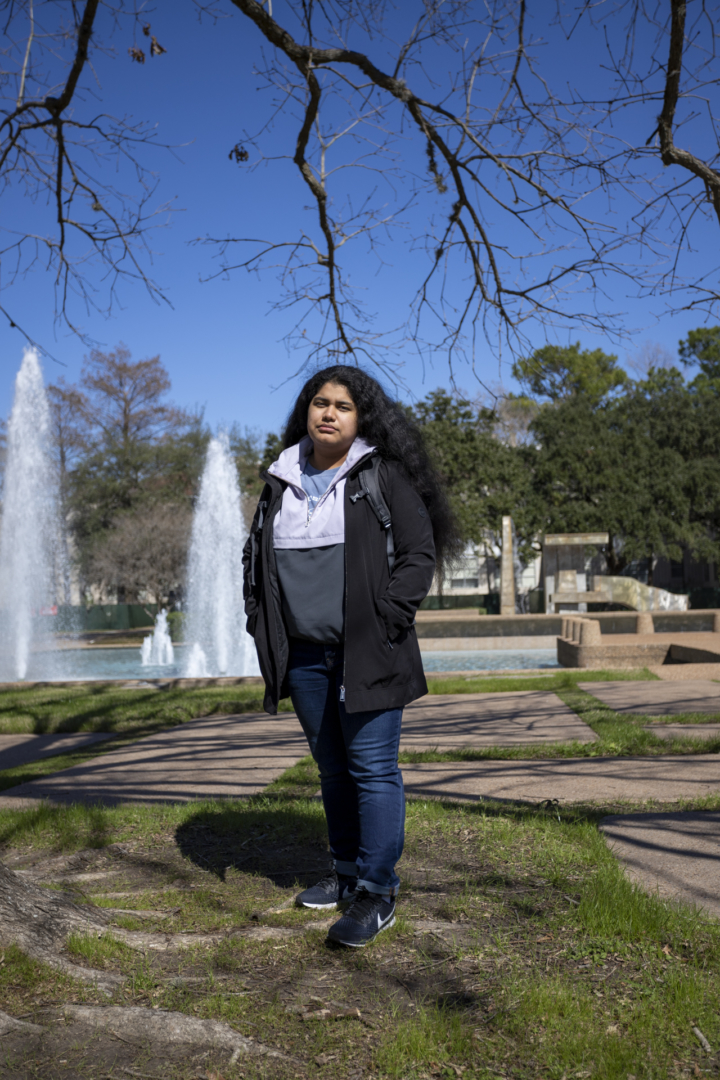
Celine Pineda stands near the Cullen Fountain, one of her favorite spots on campus. She was hopeful she’d find a community of native students she could relate to when she first came to UH, but that was not the case. | Katrina Martinez/The Cougar
Today, Native American students make up only 0.1 percent of 46,148 enrolled — a total of 67 students, and a figure that has dropped by nearly 50 percent since 2009.
“Houston as a city — is so culturally diverse, and I love that,” Pineda said with tears in her eyes. “But not seeing anyone like me, it’s kind of surreal that I was surrounded by so many different cultures, colors, experiences and histories, and yet, I stood alone in a huge grass field as the only yellow blade.”
Pauline Strong, a University of Texas at Austin anthropology professor who has studied indigenous populations for 45 years, said the people who identify as native have increased over time in the U.S., which differs from UH’s significant decrease in native student enrollment.
“That doesn’t reflect the change in the native population in Texas or nationally, so there must be some other explanation for it. Strong said. “If anything the population of indigenous students in Texas has increased. … It could reflect a lack of recruiting of students in that demographic.”
Before committing to UH, Pineda was considering the University of Oklahoma, but the school’s racist past and lack of support for the native community led her to choose Houston, which was closer to home.
The history freshman hopes to document Indigenous American history and make it accessible, but when she enrolled for classes, she said she could not find a single Native American studies class offered.
“There’s queer history here and as a queer that’s great for me, but seeing that part of myself more out here on campus than my (indigenous) half, that hits different,” Pineda said. “We love being a minority within a minority — within a minority group.”
Pineda is also a pre-med student and plans to give back to the natives in the Navajo Nation and across America.
“Ever since I was a kid, I knew I was going to be a doctor,” she said. “I was going to open a clinic on the reservation … and give community outreach, not only medical services but also medical information.
“You can give a person a pill or a shot, but you’re not actually helping them until you teach them dietary habits and what they can do to better themselves after you’re gone.”
Deeply-rooted heritage
Pineda from a young age was passionate about her culture because her indigenous heritage runs deep within her family and their struggles.
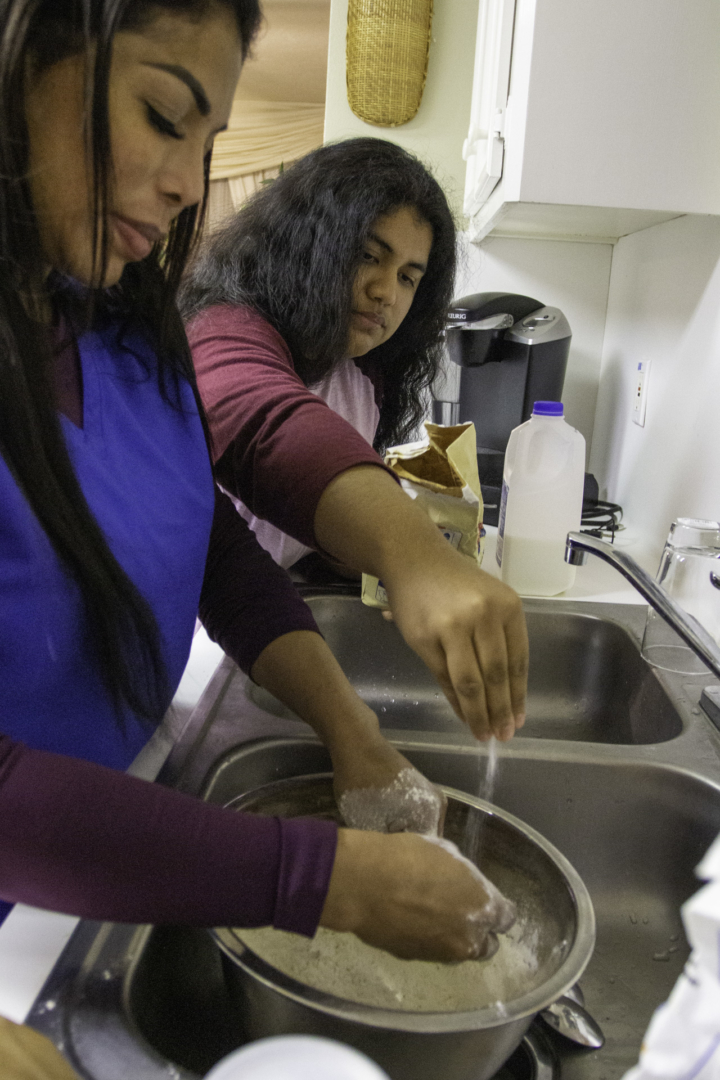
Magdalena Pineda (left) and her daughter, Celine Pineda make traditional Navajo fry bread. Although they weren’t raised in the Navajo Nation, Magdalena Pineda passed her indigenous heritage to her two kids by showing them traditional foods. | Katrina Martinez/The Cougar
Both of her parents, Magdalena and Ronaldo Pineda, were born in Nicaragua. Her mother’s family fled to the U.S. in 1985 during the Sandinista Revolution, which broke out in 1979 and continued into 1990.
Her father, on the other hand, was forced to brave the war as a child.
“My father didn’t leave Nicaragua during the civil war because his family was poor and couldn’t afford to leave and seek refuge,” Pineda said. “Instead, he was kidnapped and forced to be a child soldier in Nicaragua during the revolution.”
The lineage of Pineda’s maternal grandparents is deeply rooted in the Navajo Nation of North America. Their specific tribe fled to Central America during the time of European colonization, according to Pineda’s mother Magdalena Pineda, but they continued to represent their cultural identity despite being forced from their homelands.
Pineda’s grandfather, great grandfather and their fathers before them were all chiefs of their tribe dating back hundreds of years, Magdalena Pineda said. But with the growing number of disappearances, deaths and the rising poverty in the Navajo Nation, their family was forced to leave the reservation.
Magdalena Pineda is passionate about her culture and her people’s history but has struggled to pass the full experience of being Navajo on to Pineda and her brother.
“It’s very difficult when you can’t really share your culture, your language, your tradition or your beliefs because there’s nobody else but you,” Magdalena Pineda said. “I have raised my two children alone, so I cannot do it. … Being a single parent, it’s hard.”
‘The minority America forgets’
Throughout her 19 years, Pineda has never truly been exposed to the indigenous community outside of her family. She often felt isolated from her peers and said she was teased or treated badly by friends for being prideful of her culture.
When she entered college in 2019, she hoped to find a community of peers, professors and natives who would encourage and support her educational endeavors, but that wasn’t the reality.
“I went to the Urban Experience Program, and I’ve been told that they’re trying to find a way to get a Native American scholarship started, but I probably won’t see it within my four years,” Pineda said. “The fact that it doesn’t exist to begin with kind of feels like a backhand.
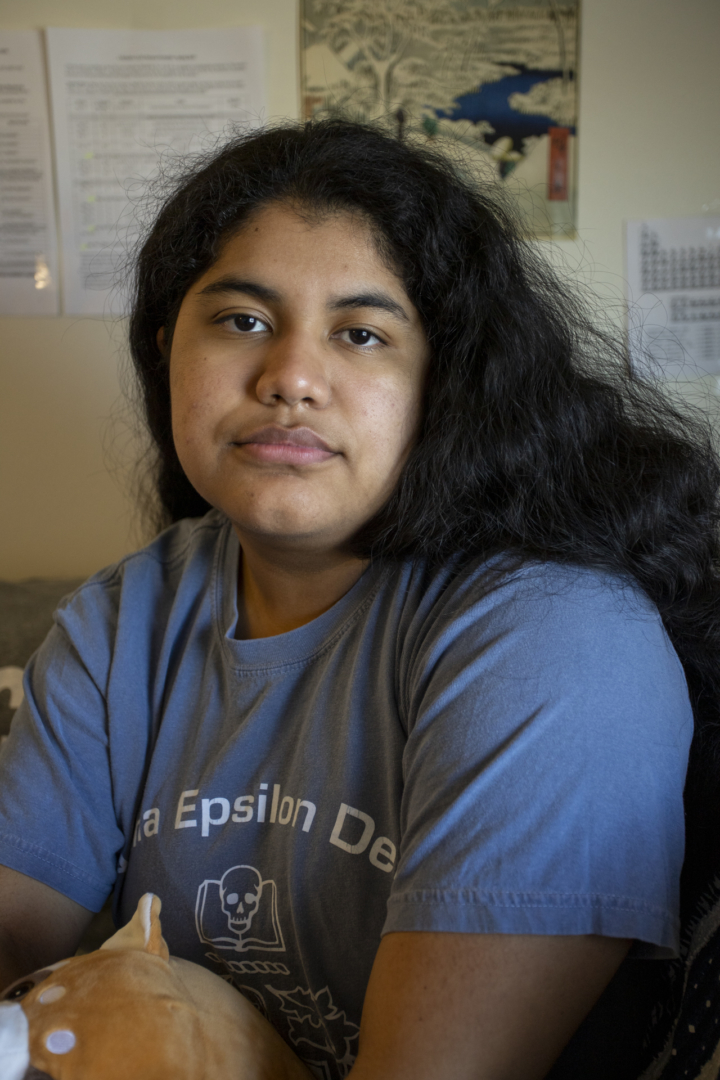
In Fall 2019, Celine Pineda spent hours in her dorm searching for a club or organization that catered to Indigenous Americans but was met with the reality that there aren’t any available to her. This has led her to feel isolated and alone on a campus that is one of the most diverse in the nation. | Katrina Martinez/The Daily Cougar
“We’re the minority America forgets.”
There are no services available specifically for indigenous students because the population is so small, said Varselles Cummings, the director of the Center for Diversity and Inclusion. However, he said the University is looking into adding some.
CDI recommended indigenous students seek out student organizations or consult with the Center for Student Involvement about clubs.
Of nearly 600 student organizations on campus, only one is relevant to the native population. The Society for Advancement of Chicanos/Hispanic and Native Americans in Science at UH was created in the 2018-19 academic year but isn’t the culturally-based organization that Pineda truly longs for.
At the time of publication, the SACNAS advisers or officers could not be reached for comment.
Although there are many cultural organizations on campus, the University is not responsible for creating them, said communications senior and director of the Cougar Involvement Ambassadors Caroline Boden.
Instead, it is up to students to find the need for a club, bring in at least three members and an adviser, and then, complete training and write a constitution to have their club approved.
“We just haven’t had students come forward and say, ‘We want this organization to be on campus,’ unfortunately,” Boden said.
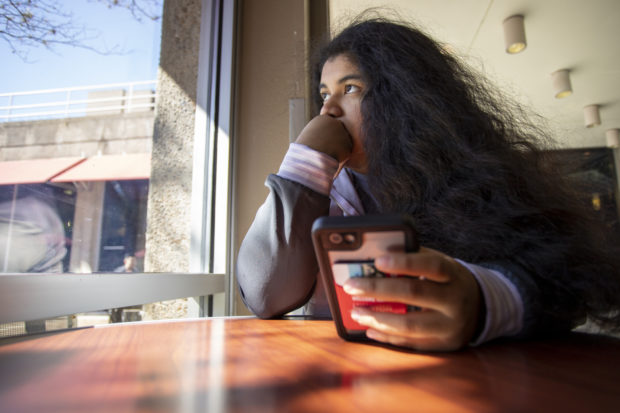
Celine Pineda sits in the Student Center Satellite where she enjoys relaxing and decompressing. Pineda hopes to start an organization for native students on campus, and she is looking for others who want to join as well as professors who are able to guide and support them. | Katrina Martinez/The Cougar
With so few natives on campus, Pineda struggled to find others to help her start such an organization when she tried to establish one during her first semester.
She blames the University for failing to encourage more native students to enroll at UH. The issue is there are no scholarships or cultural support provided to Indigenous Americans by the University, she said.
“The more diversity you have, the more people you include, the more effort you put in, you will see those benefits,” Pineda said. “Go back to the history of this college and see how they started being more inclusive to minority groups, not only sexuality but also people of color and different backgrounds and ideology. Now, this campus flourishes.
“By not reaching out that hand, the school deprives itself of our voice, and they’re unknowingly pushing us out.”
news@thedailycougar.com
—
“‘I stood alone’: indigenous student’s struggles with ethnic isolation” was originally posted on The Daily Cougar
